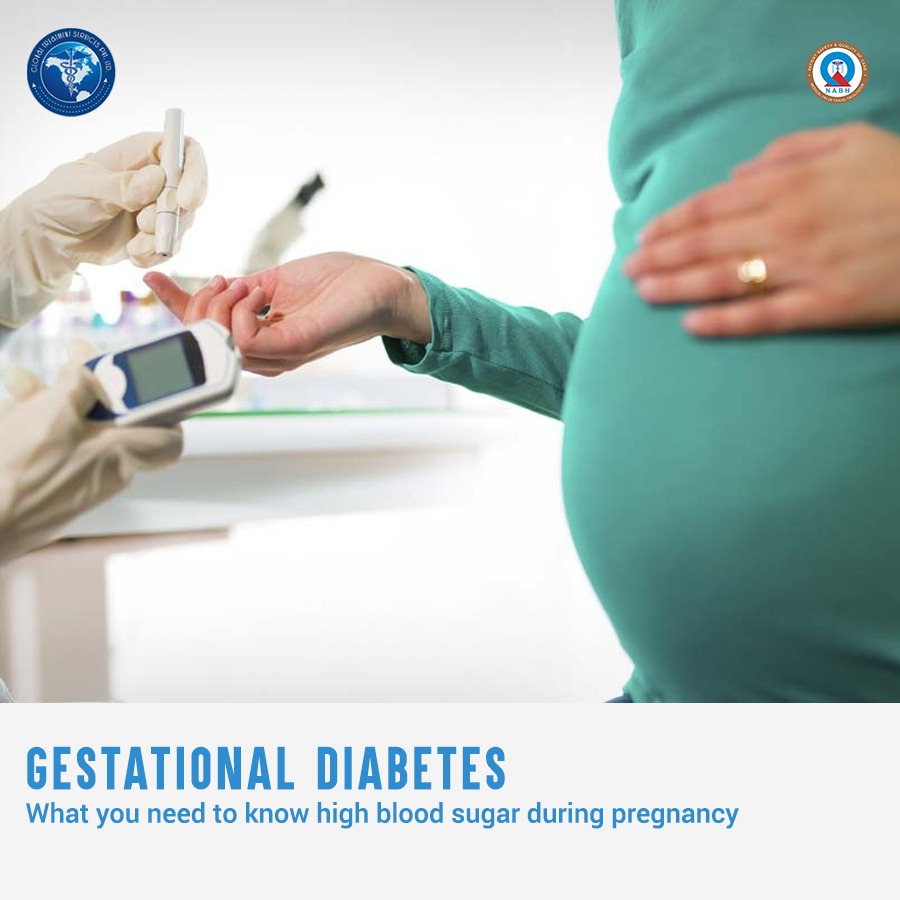Gestational Diabetes Mellitus (GDM) is the diabetes that occurs during pregnancy and usually disappears after delivery.As gestational diabetes can harm mother and unborn baby,it is important to manage it. GDM appears in the second half of pregnancy ,in 24 -28 weeks.So it is necessary to conduct a screening for blood glucose around this period.
Causes
In pregnancy, the placenta produces hormones that help the baby grow and develop. These hormones also block the action of the woman’s insulin. This is called insulin resistance. Because of this insulin resistance, the need for insulin in pregnancy is 2 to 3 times higher than normal. If you already have insulin resistance, body may not be able to cope with the extra demand for insulin production and the blood glucose levels will be higher resulting in gestational diabetes being diagnosed.
When the pregnancy is over and blood glucose levels usually return to normal and the gestational diabetes disappears, however this insulin resistance increases the risk of developing type 2 diabetes in later life.
Risks
Blood sugar that is not well controlled in a woman with gestational diabetes can lead to problems for the pregnant woman and the baby:
Extra Large Baby
GDM causes the baby’s blood sugar to be high. The baby is “overfed” and grows extra large.The baby can be born with nerve damage due to pressure on the shoulder during delivery.
Cesarean Section
Besides causing discomfort to the woman during the last few months of pregnancy, an extra large baby can lead to problems during delivery for both the mother and the baby. The mother might need a C-Section to deliver the baby.
Preeclampsia
Preeclampsia is when woman has high blood pressure, protein in her urine and swelling in fingers and toes.Women with diabetes have high blood pressure more often than women without diabetes. High blood pressure might lead to the baby being born early and also could cause seizures or a stroke in the woman during labor and delivery
Hypoglycemia
If a woman’s diabetes was not well controlled during pregnancy, her baby can very quickly develop low blood sugar after birth. The baby’s blood sugar must be watched for several hours after delivery.
Testing for GDM
All women are screened for gestational diabetes at their 24 to 28 week routine check up. Women who are at higher risk may be tested more often. You are at higher risk of developing gestational diabetes if you:
- are overweight
- over the age of 25 years
- a family history of type 2 diabetes
- come from some Asian backgrounds
- have had gestational diabetes before
- have previously had polycystic ovary syndrome
- have had a large baby before
Glucose tolerance test
Tests include the glucose challenge test and the oral glucose tolerance test (OGTT).‘Glucose tolerance test’ is the diagnostic test used to find out if you have gestational diabetes. It requires fasting for 10 hours (generally overnight). A blood test is taken, followed by a 75g glucose drink and further blood tests at one and two hours later. You will be required to remain at the laboratory for the two-hour duration of the test. If the results of the glucose challenge test show high blood glucose, you will return for an OGTT test to confirm the diagnosis of gestational diabetes.
A diagnosis of gestational diabetes doesn’t mean that you had diabetes before you conceived, or that you will have diabetes after giving birth.
If you are diagnosed with GDM,you will need to consult diabetologist also in addition to your gynaecologist.
Mangement,Treatment and Prevention
Managing gestational diabetes includes following a healthy eating plan and being physically active. If your eating plan and physical activity aren’t enough to keep your blood glucose in your target range, you may need insulin.
You can lower your chance of getting gestational diabetes by losing extra weight before you get pregnant if you are overweight. Being physically active before and during pregnancy also may help prevent gestational diabetes.
If you had gestational diabetes, you are more likely to develop type 2 diabetes. Your child is more likely to become obese or develop type 2 diabetes. You may be able to lower your and your child’s chances of developing these problems by reaching a healthy weight, making healthy food choices, and being physically active.
For any queries regarding the procedure and treatment facilities,email us at query@gtsmeditour.com .
Read about:Organ transplantation

Post a comment